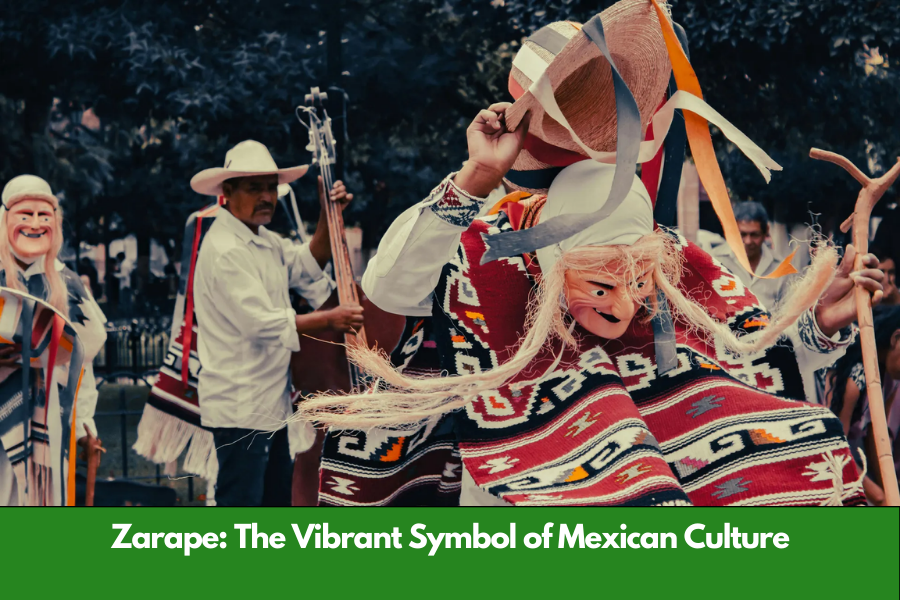Zarape: The Vibrant Symbol of Mexican Culture
The zarape, also spelled serape, is more than just a colorful garment; it’s a significant emblem of Mexican heritage. Rooted in centuries of history and culture, the zarape’s vivid patterns and versatile use have made it a beloved cultural symbol, not just in Mexico but globally. In this article, we’ll explore the origins, evolution, and modern interpretations of the zarape, as well as its cultural impact and importance.
Origins of the Zarape
The origins of the zarape trace back to pre-Hispanic Mexico, where indigenous peoples wove textiles for both practical and ceremonial purposes. These early forms of clothing were essential for protection against the elements, especially in colder regions like the highlands of Central Mexico. However, they were more than utilitarian; indigenous groups used vibrant colors and patterns, often representing their unique identities, beliefs, and status within the community.
When the Spanish arrived in the 16th century, they brought new weaving techniques and materials, including wool. This fusion of indigenous craftsmanship and European influences eventually led to the creation of what we now know as the zarape. Traditionally, zarapes were woven by hand on looms using brightly colored wool or cotton. Each zarape was unique, with patterns often symbolizing regional identity or familial heritage. Over time, the zarape became associated with Mexican charros, the country’s cowboy culture, further embedding it as a symbol of national pride.
Cultural Significance
Throughout Mexican history, the zarape has maintained a central role in cultural identity. During the Mexican Revolution in the early 20th century, revolutionaries and soldiers alike used zarapes for warmth and protection. The garment quickly became a symbol of resistance and nationalism, representing the struggle for independence and freedom from oppression.
The zarape’s iconic status was further solidified by its frequent appearances in Mexican cinema and popular culture. Films from the “Golden Age of Mexican Cinema” often depicted heroes and bandits alike wearing zarapes, symbolizing their strength, resilience, and connection to the land. These films not only popularized the zarape within Mexico but also introduced it to international audiences.
Moreover, the zarape became an essential element of mariachi and charro attire. Mariachis, often seen as ambassadors of Mexican culture, don the garment during performances, showcasing the vibrant colors and intricate designs synonymous with Mexican artistry. The zarape, in this context, transcends mere clothing and becomes a symbol of cultural pride, heritage, and identity.
Evolution and Modern Use
While the traditional zarape remains a revered symbol of Mexican culture, the garment has evolved over time, adapting to modern styles and uses. Today, zarapes are not only worn but also used as decorative pieces in homes and public spaces. In some regions, they are crafted as blankets or rugs, with their colorful patterns adding a touch of Mexican artistry to everyday life.
The fashion industry has also embraced the zarape’s vibrant designs, incorporating them into contemporary clothing and accessories. Designers worldwide have reimagined the zarape, blending its traditional patterns with modern silhouettes. This fusion of old and new reflects the dynamic nature of culture, where traditions are preserved but also adapted to fit contemporary tastes.
Additionally, the zarape has become a popular souvenir for tourists visiting Mexico, offering a tangible piece of the country’s rich cultural history. These zarapes, often sold in markets and craft stores, provide a way for people around the world to connect with and celebrate Mexican culture.
The Zarape as a Symbol of Mexican Identity
The zarape’s enduring popularity is a testament to its deep cultural significance. It is more than just a garment; it is a symbol of Mexican identity, resilience, and pride. The vibrant colors and intricate patterns of the zarape tell stories of the people who made and wore them, from the indigenous groups of pre-Hispanic Mexico to the revolutionaries fighting for freedom.
In a globalized world, the zarape serves as a reminder of the importance of cultural preservation. While the world continues to change, the zarape remains a powerful symbol of Mexican heritage, connecting past, present, and future generations. For many Mexicans, wearing a zarape is not only a way to stay warm or make a fashion statement but also a way to honor their ancestors and celebrate their unique cultural identity.
The Zarape in Global Pop Culture
The zarape has made its way into global popular culture in various forms, appearing in films, television shows, and fashion runways worldwide. Its iconic status was bolstered by Hollywood’s portrayal of Mexican characters, particularly in Western films, where the zarape was often used to signify a character’s connection to Mexico.
Beyond the silver screen, international fashion designers have incorporated zarape-inspired elements into their collections, blending the traditional with the avant-garde. These global interpretations of the zarape not only showcase its aesthetic appeal but also highlight the garment’s ability to transcend cultural boundaries and appeal to people of diverse backgrounds.
Music, too, has played a role in spreading the zarape’s image worldwide. Mexican musicians, particularly mariachi bands, often wear zarapes during performances, solidifying the garment’s association with Mexican culture. The bold colors and patterns of the zarape, combined with the emotive power of mariachi music, create a striking image that resonates with audiences far beyond Mexico’s borders.
Preservation of Zarape Craftsmanship
Despite its widespread popularity, traditional zarape craftsmanship faces challenges in the modern world. As mass production techniques become more prevalent, the art of hand-weaving zarapes is at risk of fading away. However, there are ongoing efforts to preserve this important aspect of Mexican cultural heritage.
Many artisans in Mexico continue to produce zarapes using traditional methods, ensuring that the knowledge and skills passed down through generations are not lost. These artisans often work in small, family-run workshops, where each zarape is crafted with care and precision. The preservation of this craft is not only important for maintaining cultural traditions but also for supporting the livelihoods of these artisans and their communities.
Organizations and cultural institutions in Mexico and abroad are also working to promote and preserve zarape craftsmanship. Through exhibitions, workshops, and educational programs, they aim to raise awareness of the cultural significance of the zarape and the importance of supporting traditional artisans. These efforts ensure that the zarape will continue to be a symbol of Mexican heritage for generations to come.
The Zarape as a Source of Inspiration
The zarape’s vibrant colors, intricate patterns, and rich cultural history have made it a source of inspiration for artists, designers, and creators worldwide. Its influence can be seen in various forms of artistic expression, from visual art to fashion design. The zarape’s bold, geometric designs have inspired countless works of art, both in Mexico and internationally.
In fashion, the zarape’s patterns and colors have been reinterpreted in everything from high-end couture to streetwear. Designers have taken inspiration from the zarape’s traditional designs, using them to create modern, innovative pieces that celebrate Mexican culture while appealing to global audiences.
Moreover, the zarape’s role in Mexican cultural identity has inspired musicians, filmmakers, and writers to explore themes of tradition, heritage, and pride in their work. The zarape, with its deep historical roots and enduring cultural significance, continues to be a powerful symbol of Mexican creativity and resilience.
Conclusion
The zarape is much more than a garment; it is a vibrant and enduring symbol of Mexican culture. From its origins in pre-Hispanic Mexico to its modern-day adaptations in fashion and design, the zarape has remained a powerful emblem of cultural identity and pride. Its bold colors and intricate patterns tell stories of the people who have worn and crafted zarapes for centuries, and its influence continues to inspire artists, designers, and creators around the world.
As we look to the future, the zarape’s significance will likely continue to grow, both within Mexico and internationally. Whether worn as a traditional garment, displayed as a work of art, or reimagined in contemporary fashion, the zarape remains a timeless and powerful symbol of Mexican heritage. In a world that is constantly changing, the zarape serves as a reminder of the importance of preserving and celebrating cultural traditions, ensuring that they endure for generations to come.
Keep an eye for more latest news & updates on glamourtomorrow






